Easy Package Creation with EasyPack RPK-4607 RPK-4610
EasyPack is a new, interactive way of creating projects and setups with RayPack. It integrates most basic and advanced options in different packaging projects, providing a smooth and consistent experience. The goal of this new UI is to expose the most important information about the selected setup, present available paths and features, collect the necessary feedback in project-specific steps, and finally to crate a new project. The following scenarios are covered by EasyPack:

•Local repackaging
•Repackaging on a virtual machine
•Creating a blank project (MSI/MSIX)
•Creating a modification package (MSIX) or blank Windows Installer Transform (MST)
•Creating packages with PackageStore

This new wizard can be used side-by-side ot the already existing functionality. Also in this version, we reorganized the groups of projects in the New project menu to be better accessible and functionally related.

PackageStore Integration with 10K+ Packages RPK-4538 RPK-4675
Relaunched Package Store platform offers several thousands of apps in 10K different versions, most of them with further configuration options. Package Store has a simple interface, which guides through the complete process, from automatic downloading of sources, through the configuration, to the package generation. The packages are deployment-ready and can be deployed to popular deployment systems, like Intune, SCCM or RMS UEM.
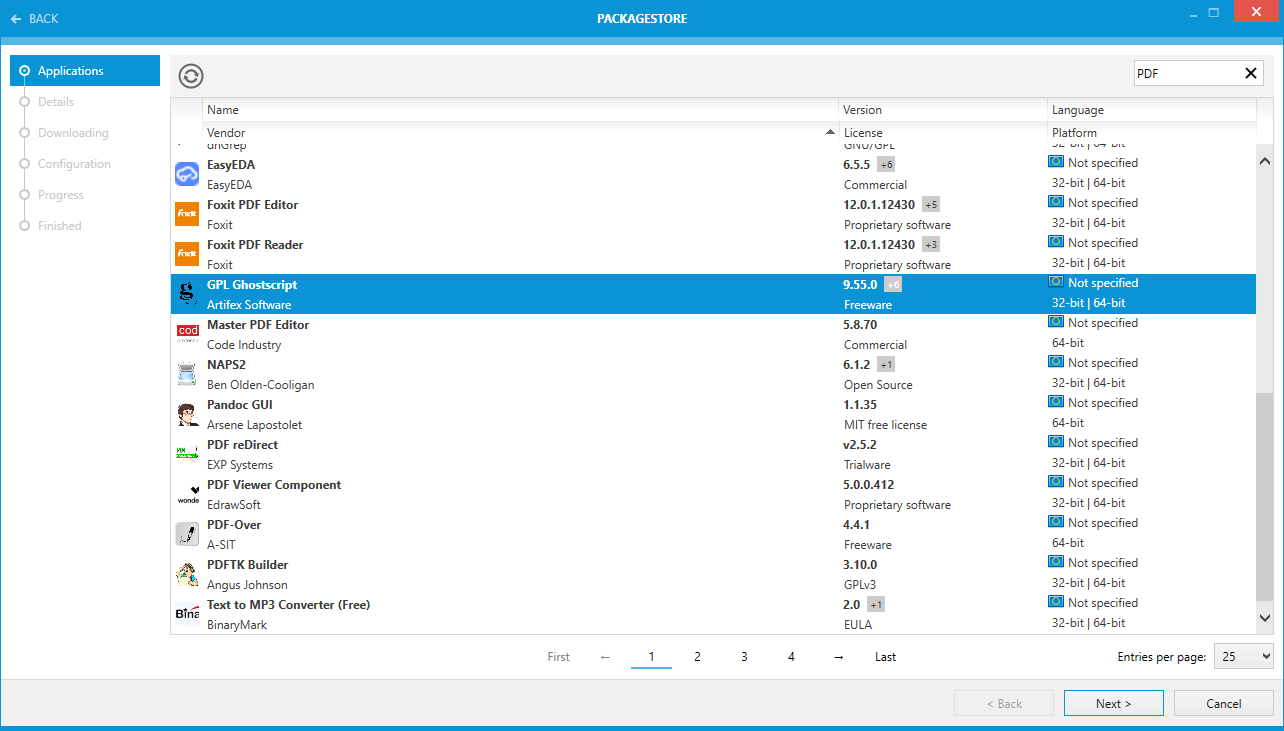
Once the automatic packaging is finished, the user still has the ability to continue editing the project using the Visual Designer component for PSADT projects.
Direct Deployment from PSADT and MSIX Projects to Intune RPK-3994 RPK-4521 RPK-4518
A new option for direct deployment has been added to our PSADT and MSIX project editors. This feature means, it is now possible to deployment from any Windows packaging project: MSI, MSIX and wrapped setup (PSADT).
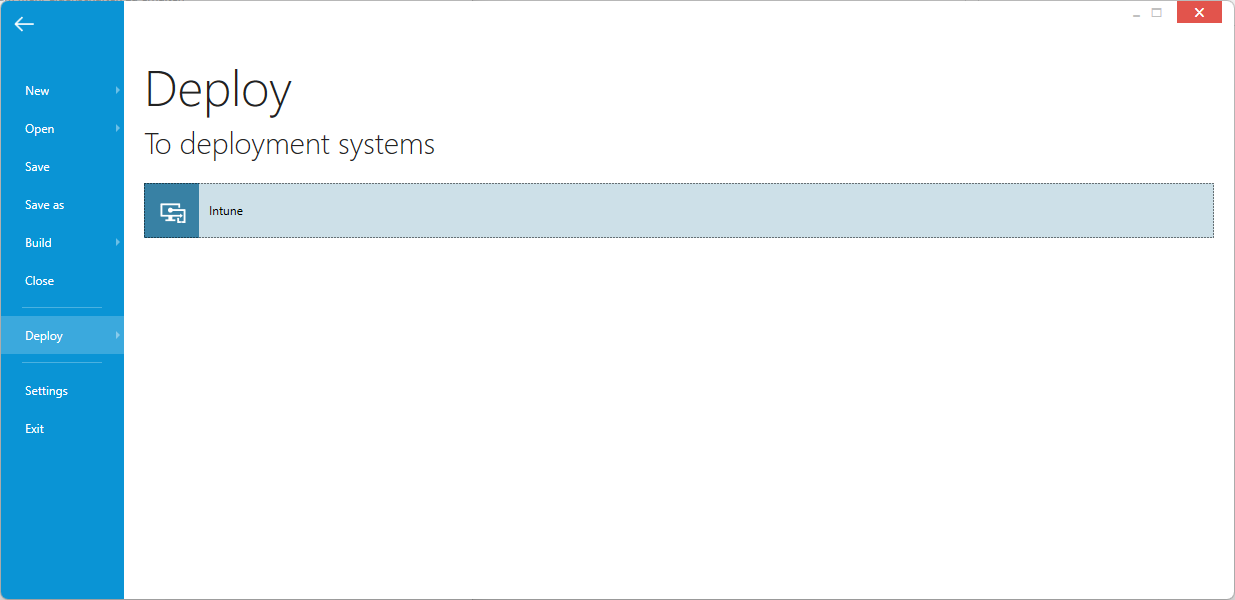
Editing of MSI Environment Variables from the Content View RPK-4558
In PackDesigner, we added a new tab in the Component view. This context-aware view shows the list of environment variables assigned to a selected component and provides an easy way of adding a new content that should go to a specific component.
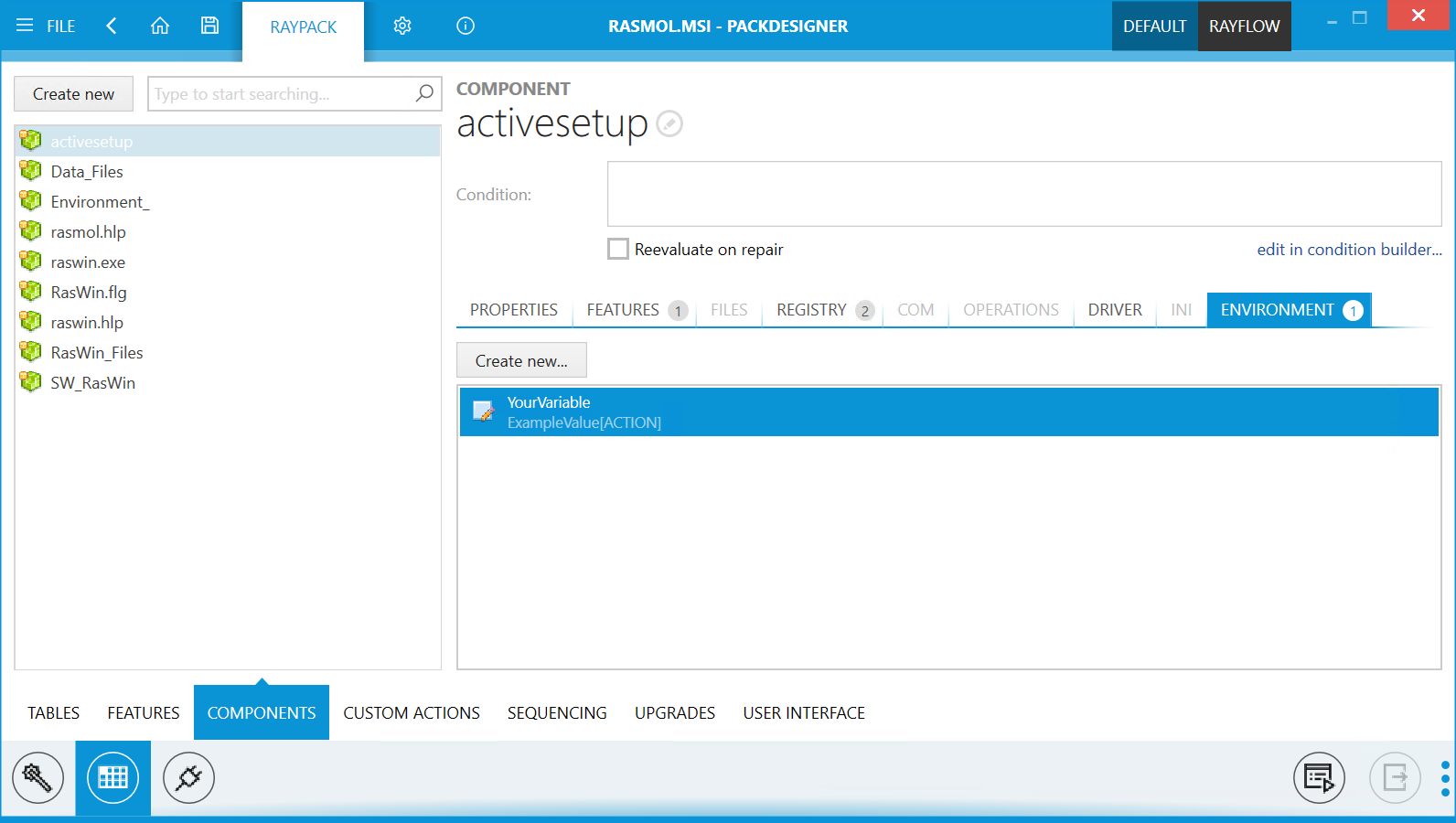
Advanced Options for Signing and Timestamping RPK-4609
Based on popular feedback, we improved the signing dialog by adding a list of predefined public timestamp server, available for free. To support custom scenarios, the user can now also specify the digest algorithm used for timestamping. Finally, to make sure the configuration is accepted for MSIX packaging. a new button to test the settings is available. This means that signing issues related to timestamping can now be identified very early on, directly during the initial setup.

Ability to Edit Files and Scripts Directly from the MSIX Project Editor RPK-4609
Editing files or scripts from any MSIX-based project has never been easier. In this version, there is an extra context-menu option to open any file in an editor of choice. RayPack does the heavy lifting and ensures the new content overwrites the existing one without time-consuming manual decompression and compression of resources.
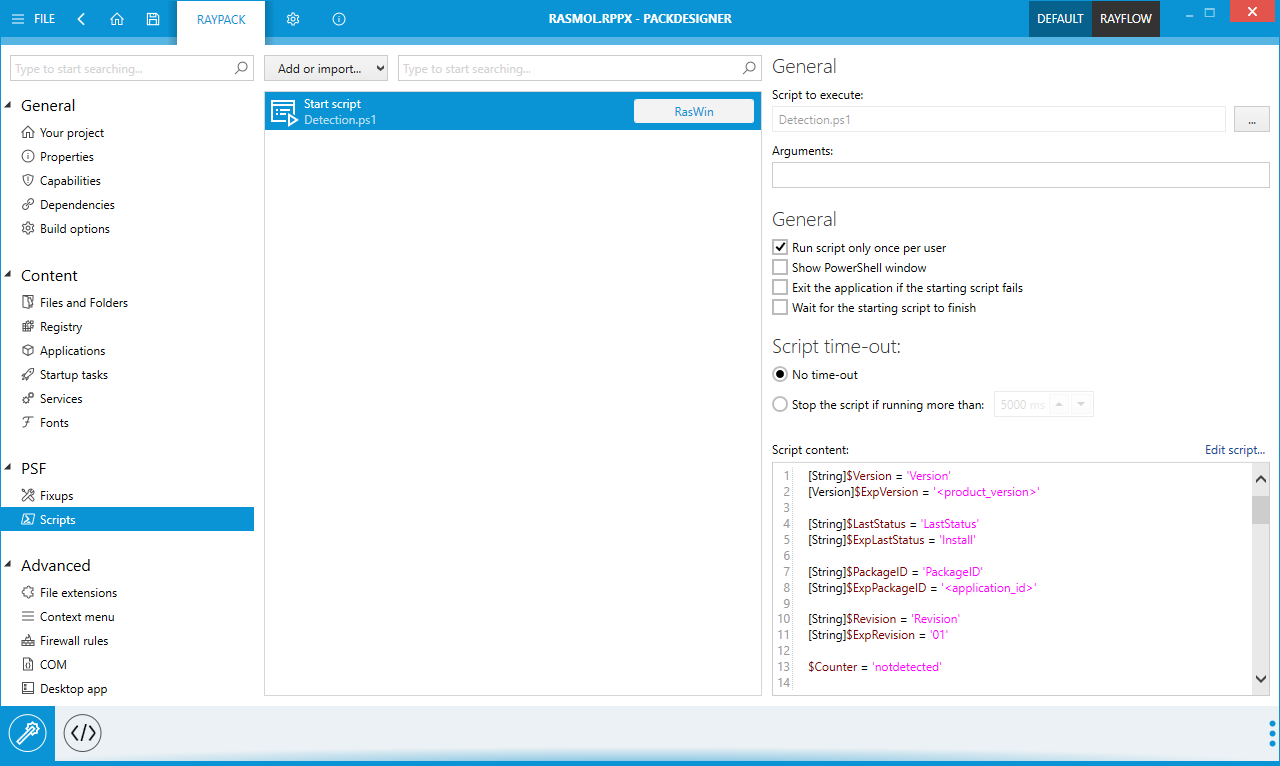
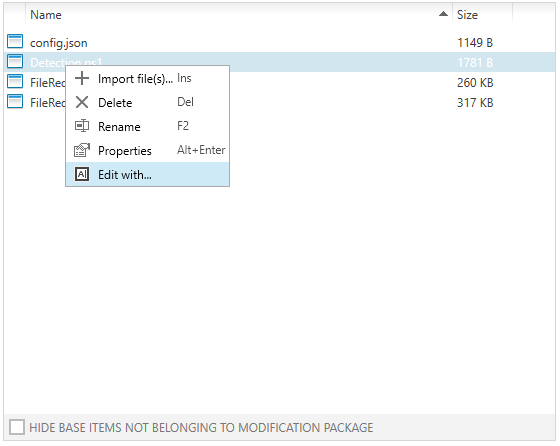
Improvements and New Features for MSIX Projects RPK-4448
Based on popular demand, we implemented several new MSIX features, which can be now managed and edited using the visual designer:
•With the new Fonts page it is possible to register fonts.
•With the new Desktop app page it is possible to define in-depth behavior for apps that blend MSIX and classic deployment.
•The Dependencies page now supports driver dependencies and host runtime dependencies
•The Properties page now exposes options for multi-user awareness and file/registry write virtualization.
•The Applications page has now several extra options to set the runtime behavior, trust level and other in-depth settings for MSIX deployment.
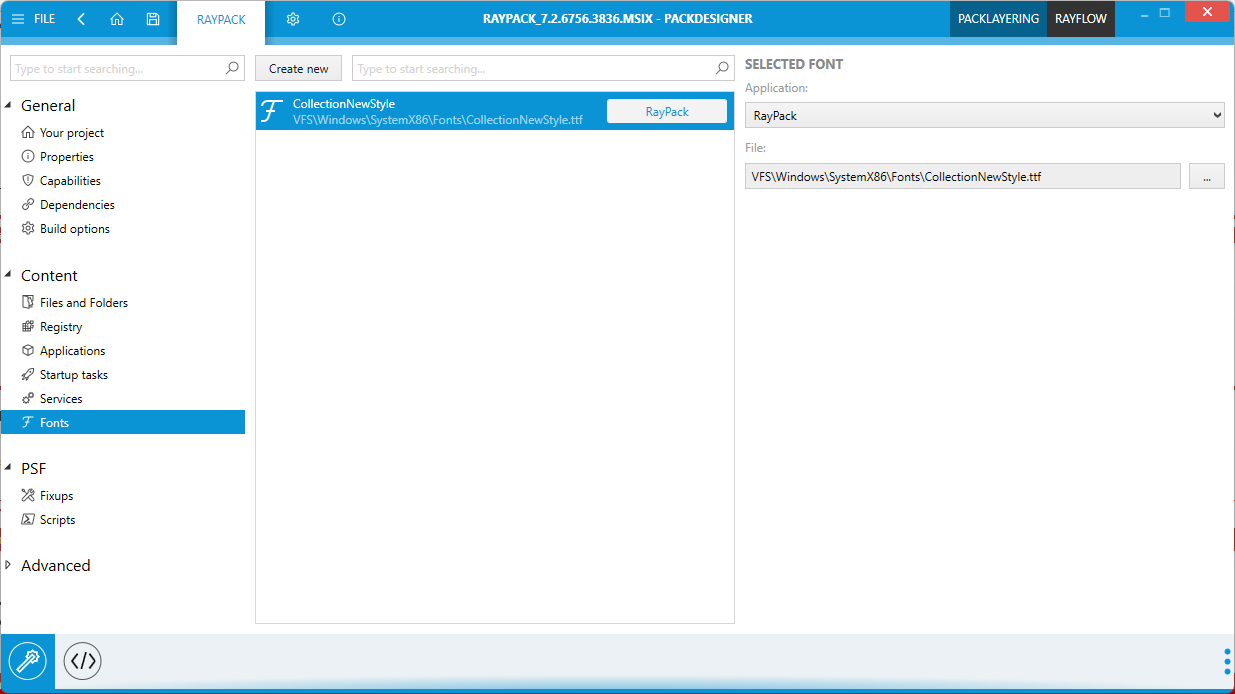
Additionally, the structure of options in the main menu has been reorganized. Similar options are now grouped, and less-frequently used were moved to the Advanced group.
Repackaging to RPPX Format Is Now Available in PackBot RPK-4647
We added a new target format (RPPX) to the PackBot configuration dialog. RPPX is a project format for MSIX-based setups.
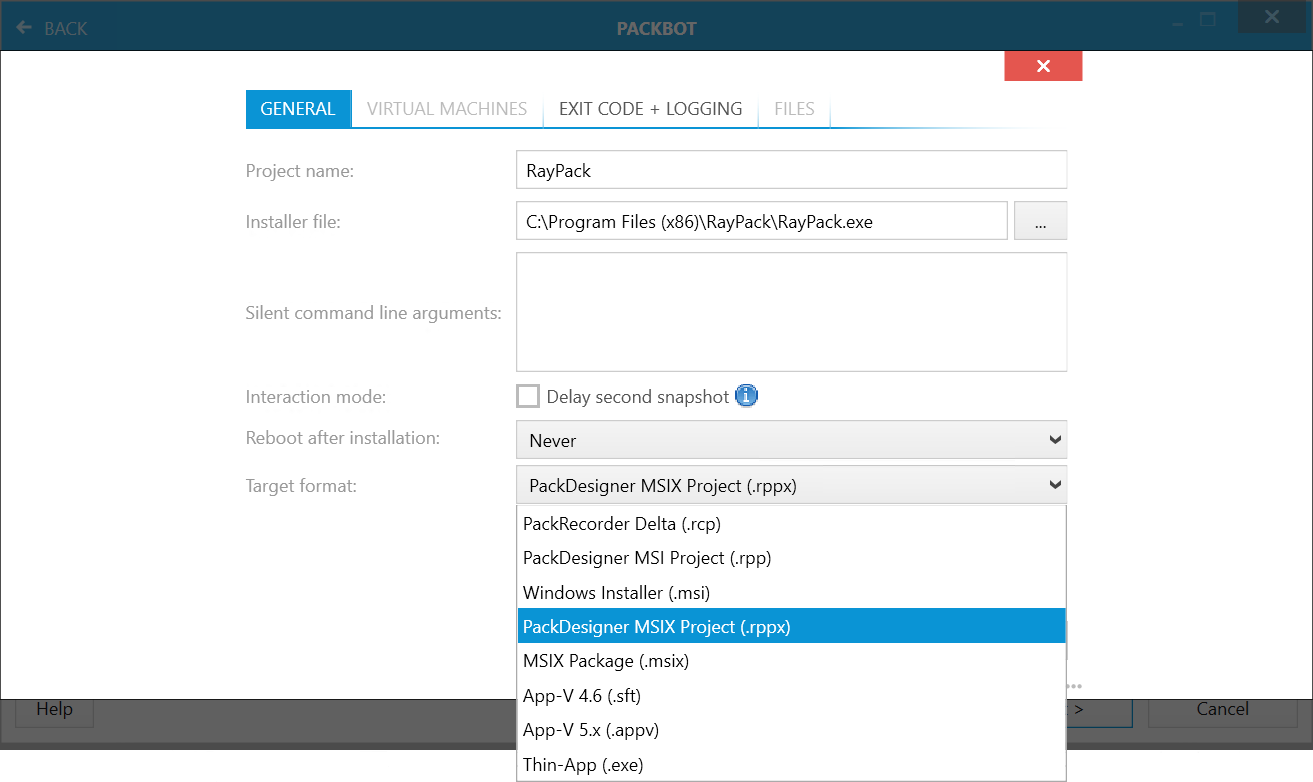
Better Control of KeyPath Resources RPK-4659
Based on a popular feature request, we implemented new context menu options to provide a quick removal of component key paths. This new function is available on both, the global (Registry, Files + folders) and on the Component level. When a key path is removed, the empty key path (component directory) is used automatically according to MSI best practices.
